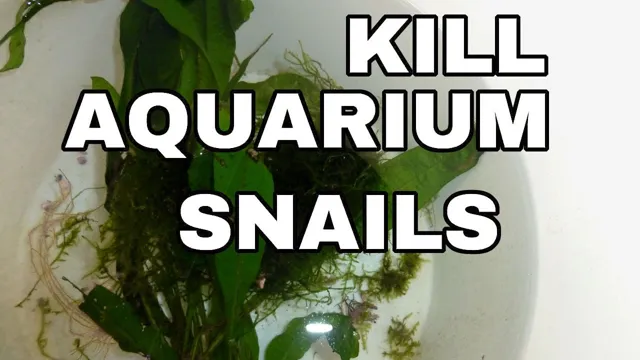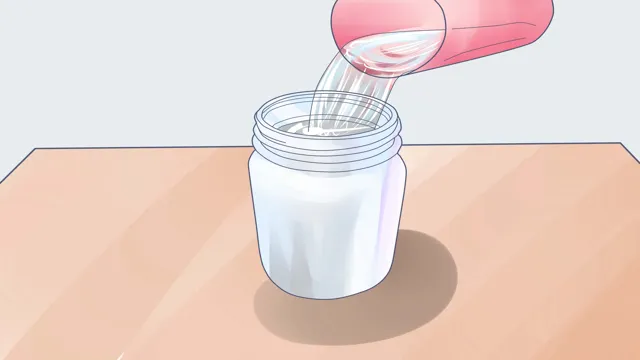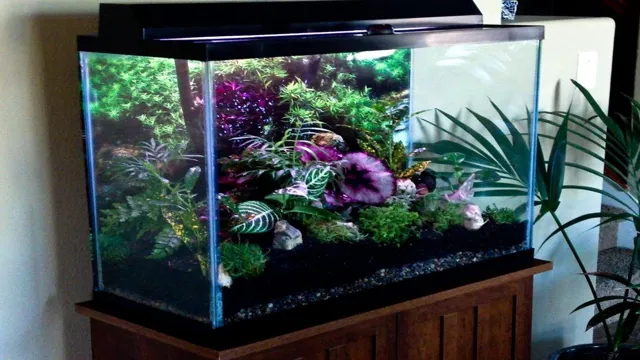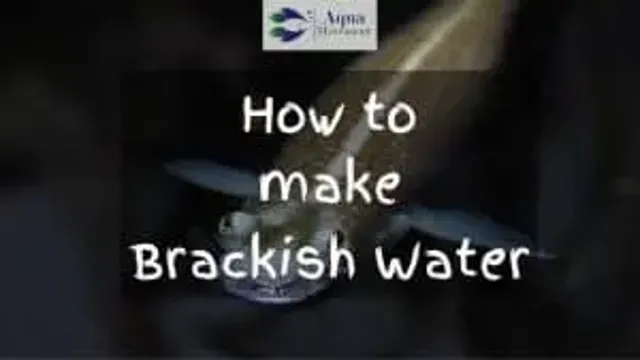How to Kill Pest Snails on Aquarium Plants: Effective Ways to Control Snail Infestations

Pest snails might seem harmless at first, but they can be a real nightmare in your aquarium, especially when they start munching on your precious plants. These tiny creatures reproduce rapidly and can quickly take over your tank. If you’re dealing with an infestation of pest snails and you’re wondering how to get rid of them without harming your plants, you’ve come to the right place! In this guide, we’ll be sharing effective methods to kill pest snails on aquarium plants and prevent them from coming back.
It’s essential to act fast when you notice the first signs of a snail infestation, such as trails of slime on your tank glass, plants, or substrate, or small dots on leaves. The earlier you act, the easier it will be to control the population of pest snails. These creatures feed on algae and leftover food, and they can be introduced to your aquarium via new plants, fish, or decorations.
Therefore, it’s crucial to quarantine any new additions before introducing them to your tank. Now, let’s dive into the methods you can use to get rid of pest snails on your aquarium plants: you can use natural remedies such as traps, manual removal, or chemical treatments. Traps can be as simple as placing a lettuce leaf or a piece of carrot into your tank, and the snails will gather on it overnight, making it easy to remove them in the morning.
Manual removal can be a bit time-consuming, but it’s also effective. Use a pair of tweezers or a chopstick to pick up the snails one by one and remove them from your tank. Chemical treatments are also available, and some can kill pest snails without harming your plants, such as copper-based medications or snail-specific products.
However, be cautious when using chemicals and always read the label carefully to ensure they’re safe for your fish and other aquarium inhabitants. In conclusion, killing pest snails on aquarium plants can be challenging, but it’s not impossible. By taking preventive measures, acting fast, and using the methods mentioned above, you can successfully eradicate them from your tank and keep your plants healthy.
Remember to monitor your tank regularly and avoid overfeeding your fish, as excess food can attract more snails.
Identify the problem snails
Dealing with pest snails in an aquarium can be quite frustrating for those who want to keep their plants in pristine condition. These snails are notorious for munching on aquatic plants, causing unsightly holes and damaged leaves. Luckily, there are ways to combat these pests without harming the plants or other inhabitants in the tank.
One effective method is using a snail trap. These traps are designed to attract snails with some bait and then keep them trapped until you can dispose of them. Alternatively, you could try adding snail-eating fish, such as loaches or pufferfish, to your tank.
They will happily munch on the snails without harming the other aquatic inhabitants. Lastly, you could consider manual removal by using a net or your fingers to pick the snails out of the tank. However, this can be time-consuming and not always practical in larger tanks.
Overall, there are many options available to help control snail infestations and keep your aquarium plants healthy.
Look for small, brown or gray snails with cone-shaped shells
If you’re noticing some pesky snails in your garden, it’s crucial to identify the problem snails to address the issue effectively. Look for small, brown or gray snails with cone-shaped shells as they are most likely the culprits. These snails can cause severe damage to plants as they feast on leaves, stems, and flowers, leaving behind a trail of destruction.
To determine if these snails are the ones causing damage in your garden, check for irregular holes and ragged edges on plant leaves. Additionally, inspect the soil around the plants for slime trails left behind by these snails. Once you’ve identified the problem snails, you can take appropriate action to eliminate them and protect your plants.
Using organic methods like handpicking or introducing natural predators, like ducks or chickens, can help control the snail population without harming the environment. So keep an eye out for those cone-shaped shells and take action to protect your garden from these pesky snails.

Check your plants for clusters of eggs or tiny snails
If you’re an avid gardener, you know that not everything that visits your plants is a welcome guest, especially snails. These slimy critters can wreak havoc on your garden by gnawing on leaves, stems, and flowers, making it important to check for their presence regularly. One way to identify if you have a snail problem is by looking for clusters of eggs or tiny snails on your plants.
These clusters can often be found in damp, shady areas or in areas with an abundance of organic matter. Once you’ve identified the snail problem, the next step is to determine which type of snail you’re dealing with. Common garden snails, for instance, have a brown-grey shell that’s typically around one inch in diameter, while banded snails have a yellow or brown-striped shell.
Knowing what type of snail you’re dealing with can help you find the most effective way to remove them from your garden and keep your plants healthy. So, if you’re noticing damage to your plants or suspect a snail infestation, take a closer look, and identify the problem snails before their numbers get out of control.
Remove snails manually
Aquarium owners know the frustration of finding snails on their beloved plants. While these snails may appear harmless at first, they can quickly become a pest, reproducing rapidly and taking over the tank. So, how do you get rid of them? One effective way to remove snails manually is to use a net or tweezers to carefully pluck them off the plants.
You can also opt to physically remove any eggs you spot. Another option is to try adding a predatory snail or fish to your tank, but this may not always be effective as they could also harm other inhabitants. To prevent snails from appearing in the first place, make sure to thoroughly clean any new plants before adding them to the tank.
Additionally, avoid overfeeding as excess food can become a breeding ground for snails. With these tips, you can keep your aquarium plants free from pesky snails and enjoy a thriving aquatic environment.
Use a net or tweezers to remove snails from plants
If you’ve noticed snails crawling around on your plants, it’s vital to remove them to prevent further damage. Using a net or tweezers to remove snails manually is an effective but time-consuming way to keep them at bay. Carefully search your plants, especially the underside of leaves, and gently remove any snails you find using your tools.
Be sure to dispose of them in a way that prevents them from returning. While snails can be a nuisance, their presence can also indicate an underlying problem with your plants. Overwatering or introducing too much nitrogen to the soil can attract snails.
Consider adjusting your care routine and switching to natural pest deterrents to keep your plants healthy and snail-free. By taking a proactive approach, you can keep your garden thriving and free of unwanted pests like snails.
Place them in a separate container or dispose of them properly
If you’re dealing with a snail problem in your garden, removing them manually can be a helpful and effective solution. The first step is to identify where they are congregating. Look for areas with damp soil as snails thrive in moisture.
You can then pick them off by hand and either place them in a separate container or dispose of them properly. But be careful not to crush them as that can attract even more snails! It may take some time and effort, but manually removing snails can prevent them from damaging your plants and flowers. So, grab some gloves and get to snail hunting!
Use a snail trap
If you’re struggling with pest snails in your aquarium, using a snail trap could be a solution for you. These traps are simple and effective, and most importantly, won’t harm any of your aquarium plants. Snail traps work by using bait to lure the pests into the trap.
You can use a variety of baits, such as blanched vegetables or sinking pellets, depending on your preferences. Once the snails enter the trap to eat the bait, they are unable to leave and become trapped. You can then remove the trap, dispose of the snails, and repeat the process until your pest snail problem is under control.
Overall, if you’re looking for a non-invasive method to deal with snails on your aquarium plants, consider using a snail trap.
Set up a trap with bait that attracts snails
If you’re tired of dealing with pesky snails in your garden or yard, consider setting up a snail trap with bait. This can be a simple yet effective way to get rid of unwanted snails. One option is to use a container or shallow dish filled with beer or a mixture of yeast, sugar, and water.
Snails are attracted to the scent and will crawl in, but won’t be able to crawl back out. Another option is to use a grapefruit half or lettuce leaf as bait and place it in an overturned pot or cardboard box. The snails will be drawn to the moist, dark environment and can easily be removed and disposed of.
Remember to check your traps regularly, especially after rain, and dispose of any snails caught. With a little effort, you can reduce the number of snails in your garden and enjoy a healthier, more beautiful outdoor space.
Leave in the tank overnight and dispose of trapped snails in the morning
If you’re struggling with a snail invasion in your aquarium, a snail trap might just be the answer to your problem. This is a simple and effective DIY solution. All you need is a plastic container with a lid, some bait (like lettuce or algae), and a few small holes in the lid.
Place the bait inside the container and put the lid on, making sure the holes are small enough to prevent the snails from escaping. Leave the container in your tank overnight, and in the morning, you’ll find a surprising number of snails trapped inside. You can then dispose of them humanely and safely.
Using a snail trap is a great way to control a snail population without harming any other creatures in your aquarium. So go ahead and try it out, and say goodbye to those pesky snails for good!
Use a snail-killing chemical treatment
If you are dealing with pest snails on your aquarium plants, using a snail-killing chemical treatment can be an effective solution. These treatments contain chemicals such as copper sulfate or potassium permanganate that can kill off snails without harming your plants or fish. However, it is important to follow the instructions carefully and use the appropriate dosage for your tank size.
It’s also important to remove any dead snails from the tank after treatment to prevent any potential harm to the water quality. These treatments can be a quick and easy solution to your snail problem, but remember to always prioritize the health and safety of your aquatic ecosystem.
Choose a treatment safe for your plants and other tank inhabitants
If you find snails taking over your aquarium, an effective solution is to use a snail-killing chemical treatment. However, it is crucial to choose a treatment that is safe for your plants and other tank inhabitants. Some chemicals can harm or even kill your aquarium’s ecosystem, so it is crucial to do your research and carefully choose the right chemical.
Additionally, keep in mind that not all snail-killers work the same way. Some may target the snails themselves, while others may kill their eggs, preventing them from breeding. Therefore, it’s crucial to read the label and understand how the chosen chemical treatment works.
As an extra safety measure, remove any snails manually and use the chemical treatment only as necessary. Remember that the welfare of your aquarium and its inhabitants should always be top priority, so choose your snail-killing chemical treatment carefully.
Follow the instructions carefully and monitor your tank closely
If you’re dealing with snail infestation in your aquarium, using a snail-killing chemical treatment can be an effective way to get rid of them. However, it’s crucial to follow the instructions carefully and monitor your tank closely during the process. Chemical treatments can be harmful to your aquatic plants, fish, and other organisms if not used correctly.
Before using any treatment, make sure to remove any snail shells and debris from your tank to prevent any damage or interference. When adding the chemical treatment, be sure to use the recommended dosage and avoid overdosing. Once added, closely monitor your tank’s water parameters, including pH levels and ammonia levels, as some treatments can alter these values.
After a few days, check the tank for any dead snails and remove them promptly to prevent further contamination. Remember that a chemical treatment is just one aspect of snail extermination, and implementing good tank maintenance practices, such as not overfeeding your fish and regularly cleaning your tank, can help prevent future infestations.
Prevent future snail infestations
If you want to prevent future snail infestations in your aquarium, it’s important to take steps to kill any current snails on your plants. One effective method is to dip your plants in a bleach solution – 1 part bleach to 19 parts water – for about 5 minutes. Be sure to rinse the plants thoroughly afterwards to remove any bleach residue.
Another option is to use a commercial snail killer, which can be added directly to your aquarium water. Additionally, you can try to prevent snail infestations in the first place by quarantining new plants before adding them to your aquarium and removing any uneaten food from your tank to eliminate a food source for snails. With these preventative measures and treatments, you can help keep your aquarium snail-free and healthy.
Quarantine new plants and tank residents before introducing them to your tank
Snail infestations can be a real headache for any aquarium owner. They can multiply rapidly, eat plants, and even clog filters. The good news is that you can prevent future snail infestations by being careful when introducing new plants and tank residents to your aquarium.
Always quarantine your new plants and tank inhabitants before introducing them to your tank. This will allow you to closely monitoring them for any signs of snails or other pests. Remember, snails can hitch a ride on plants or even on the shells of other snails.
So, it’s essential to inspect everything coming into your aquarium thoroughly. By taking this simple step, you can prevent snail infestations and keep your aquarium healthy and clean.
Clean and maintain your tank regularly to discourage snail growth and reproduction
Snail infestations in aquariums can be a frustrating problem for fish owners. Luckily, there are ways to prevent infestations from occurring in the first place. One of the most effective ways to prevent snail growth and reproduction is to regularly clean and maintain your tank.
This involves removing any excess food or debris, vacuuming the substrate, and regularly changing water. By doing so, you will not only keep your tank clean, but also remove any potential snail eggs or newly hatched snails. Additionally, consider reducing the amount of food you give your fish.
Excess food can lead to an increase in snail population, as snails feed on leftover food particles. Another option is to introduce a natural snail predator, such as a loach or assassin snail, into your tank. By taking preventative measures, you can minimize the risk of snail infestations and keep your aquarium clean and healthy.
Limit the amount of food or excess nutrients in the tank
One effective way to prevent future snail infestations in your fish tank is to limit the amount of food or excess nutrients in the tank. Snails thrive in environments with ample food and nutrients, so by reducing the amount of these substances, you can greatly decrease the likelihood of a snail outbreak. One easy way to accomplish this is by ensuring that you are only feeding your fish the amount of food they need and not overfeeding them.
Additionally, consider using a filter or chemical treatment to help break down excess waste and nutrients in the water. By implementing these strategies, you can help maintain a clean and balanced environment in your fish tank, preventing snails and other pests from taking over. Remember, prevention is always better than cure, so taking proactive steps to limit the amount of food and excess nutrients in your tank can go a long way in preventing future infestations.
Conclusion
In conclusion, dealing with pest snails can be a tedious task, but it is essential to keep your aquarium ecosystem healthy and thriving. Remember to inspect your plants before adding them to your tank and quarantine them if necessary. You can manually remove snails with tweezers or invest in an assassin snail.
If all else fails, a tiny amount of copper sulfate or potassium permanganate can help eliminate the stubborn pest snails. Just be sure to follow instructions carefully, and always prioritize the safety of your aquarium inhabitants. Happy hunting, and may the snails never reign supreme in your aquatic paradise!”
FAQs
Why do pest snails appear on aquarium plants?
Pest snails can appear on aquarium plants due to overfeeding, poor water quality, or bringing in new plants or decor that already have snails on them.
What are some effective ways to physically remove pest snails from aquarium plants?
Some effective ways to physically remove pest snails from aquarium plants include using a snail trap, manually picking them out with tweezers, or introducing natural predators such as assassin snails.
Are there any natural remedies to control pest snails on aquarium plants?
Yes, there are natural remedies such as adding snail-eating fish, using garlic or cucumber slices to lure the snails out for easy removal, or adding beneficial bacteria to the water to promote a healthy environment.
Can adding copper to the aquarium help eliminate pest snails on plants?
While copper is known to be effective in killing snails, it can also harm other aquatic life in the aquarium. It is generally recommended to avoid using copper-based solutions unless it is absolutely necessary.
How can I prevent pest snails from appearing on my aquarium plants in the first place?
To prevent pest snails from appearing on your aquarium plants, make sure to thoroughly rinse and quarantine any new plants or decor before adding them to the aquarium. Avoid overfeeding and maintain good water quality by conducting regular water changes and adding beneficial bacteria.
Can pest snails harm my aquarium plants?
In small quantities, pest snails typically do not harm aquarium plants. However, in large numbers, they can potentially eat through the leaves or choke the roots of the plants.
Are there any chemical treatments available to eliminate pest snails on aquarium plants?
Yes, there are chemical treatments available such as snail killers or algaecides, but these should be used with caution as they can harm other aquatic life and potentially harm the plants themselves. It is generally recommended to exhaust all natural and physical methods before resorting to chemical treatments.






